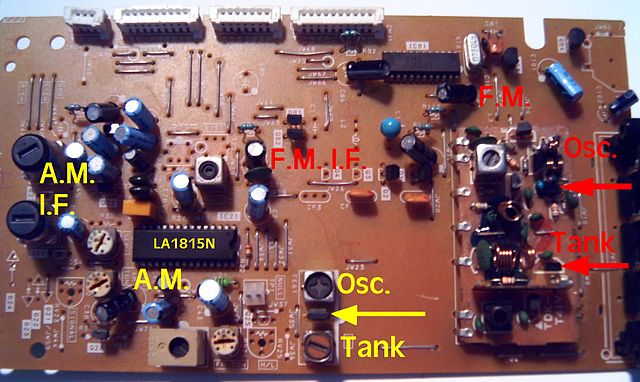A parametric oscillator is a driven harmonic oscillator in which the oscillations are driven by varying some parameters of the system at some frequencies, typically different from the natural frequency of the oscillator. A simple example of a parametric oscillator is a child pumping a playground swing by periodically standing and squatting to increase the size of the swing's oscillations. The child's motions vary the moment of inertia of the swing as a pendulum. The "pump" motions of the child must be at twice the frequency of the swing's oscillations. Examples of parameters that may be varied are the oscillator's resonance frequency and damping .
One of the first varactor parametric amplifiers, invented at Bell Labs around 1958. This 4 stage amplifier achieved 10 dB gain at 400 MHz. Parametric amplifiers are used in applications requiring extremely low noise.
In electronics, a varicap diode, varactor diode, variable capacitance diode, variable reactance diode or tuning diode is a type of diode designed to exploit the voltage-dependent capacitance of a reverse-biased p–n junction.
Australian market band I-III-U television tuner with varicaps highlighted
Consumer AM-FM broadcast tuner with varicaps highlighted



